As the final installment of the exhibition We’ll Meet Again: Islington on the Home Front in Photographs 1939-45, we look at how the people of Islington and Finsbury celebrated Victory in Europe Day, or ‘VE-Day’ in May 1945.
Monday 7 May 1945 marked a joyous occasion – the formal surrender of Nazi Germany’s armed forces in the Second World War. Winston Churchill addressed Britain the following day with a speech broadcast from Downing Street, stating “we may allow ourselves a brief period of rejoicing, but let us not forget for a moment the toils and efforts that lie ahead”. National celebrations were well under way by the time Churchill made this official announcement. Tuesday 8 May 1945 was designated Victory in Europe Day to commemorate the end of the Second World War in Europe. The people of Britain celebrated by coming together to host street parties to mark this momentous occasion.
In Islington and Finsbury, the streets were crowded with tables, likely stacked with spam and dripping sandwiches, eggless fruitcake and Lord Woolton pie (a pastry dish of vegetables). Some food and materials, such as those for buntings, were derationed temporarily to help residents mark the occasion. Special treats, such as sweets, buns, jelly and “lashings of ice cream,” were also enjoyed at the celebrations. Local businesses and benefactors gave donations of food and money to supplement the £2,000 (approximately one farthing per person) provided by the council for the occasion.
Whilst many celebrated, VE-Day did not mark the end of the war for everyone, with many soldiers still fighting in the Far East. One resident wrote to the Islington Gazette to say that, “90 per cent of Theberton Street were flying colours. Why the 10 per cent aren’t I cannot say, unless they are less interested in victory than war.” This was countered by another who replied, “What a ridiculous statement! There are still thousands for whom it is not yet finished.” It would take many years for wounds to heal, but for some the psychological relief would never come.
958 Islington lives were lost as a result of enemy air activity throughout the war, and the physical landscape of the boroughs would be changed dramatically. An estimated 3,097 houses were destroyed beyond repair; 1,253 seriously damaged and 36,877 damaged but occupiable. There was damage to 144 churches, 74 schools, 518 factories and 298 pubs. It was against this backdrop of six years of destruction and difficulty that Islingtonians and Finsburyites were ready to celebrate Victory in Europe.
Islington on VE-Day
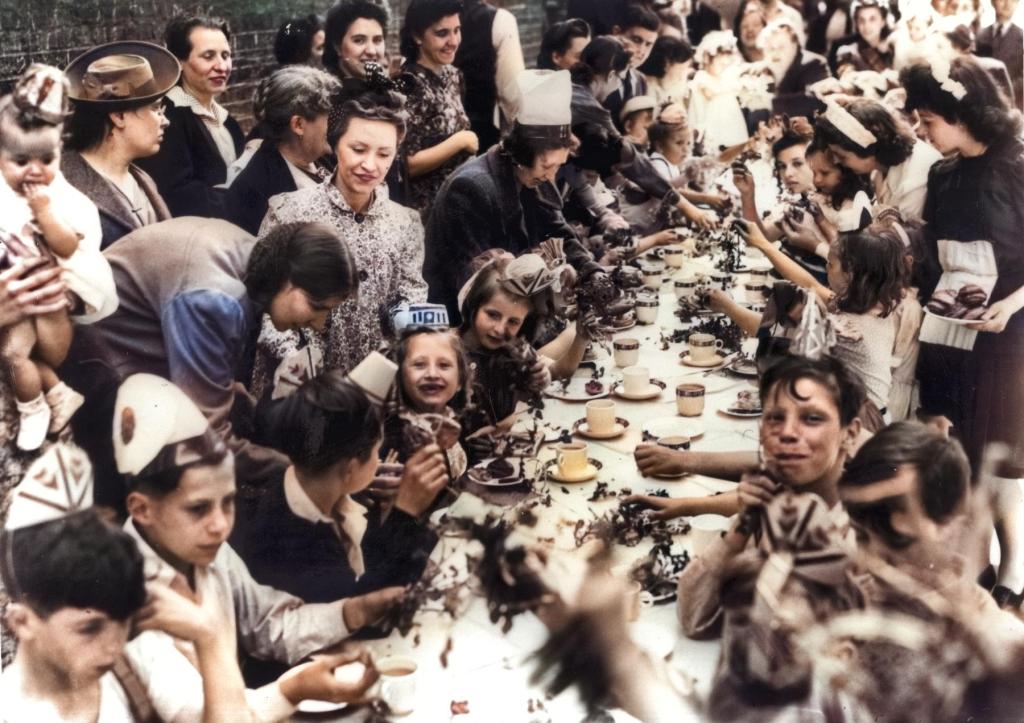
Seward Street, Finsbury, May 1945
Residents of Seward Street, Finsbury enjoying a street party to celebrate Victory In Europe Day. ‘VE-Day’ commemorates the formal acceptance by the Allies of Nazi Germany’s unconditional surrender of its armed forces on 8 May 1945.
While London’s focal point for celebrations was Trafalgar Square, the Mall and Buckingham Palace, local street parties and celebrations, like this one in Finsbury, were held all over the capital.
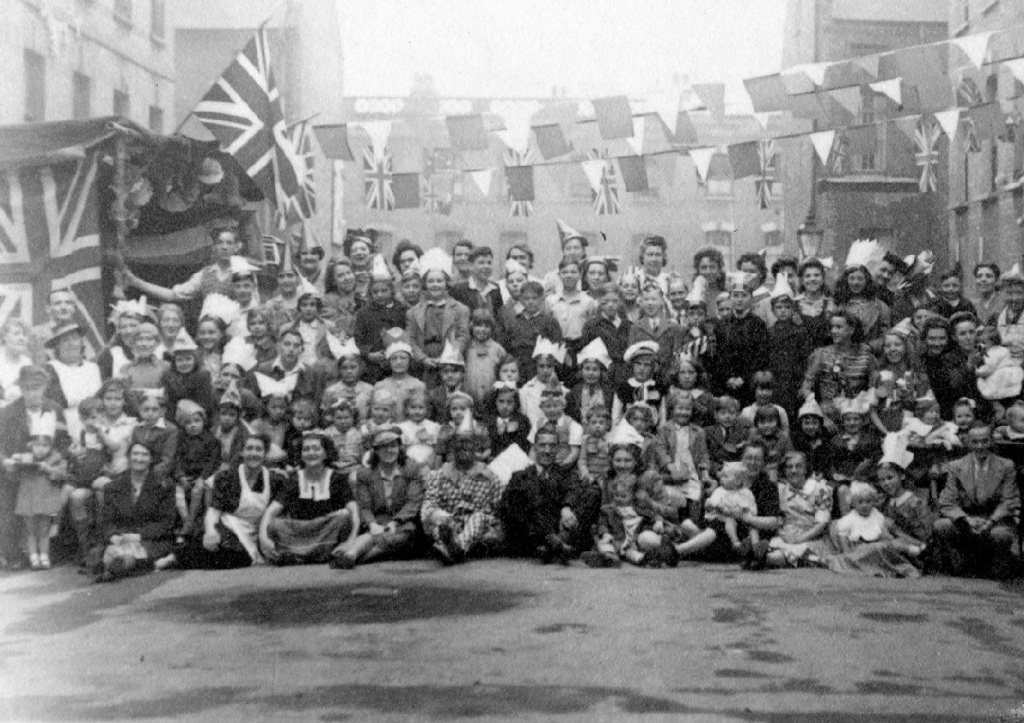
Athelstane Road, Islington, May 1945
Some celebrations started as soon as the news of the end of the war in Europe was announced on 7 May 1945. Some were postponed until all evacuees returned home so that entire families and communities could celebrate together, such as here in Athelstane Road, Finsbury Park. Events included street parties, parades and bonfires.
Revellers wore their best clothes or fancy dress. They made paper hats and sang and danced in the streets. Material for flags and bunting was de-rationed for the occasion. It was the first festive occasion that many children would have experienced.
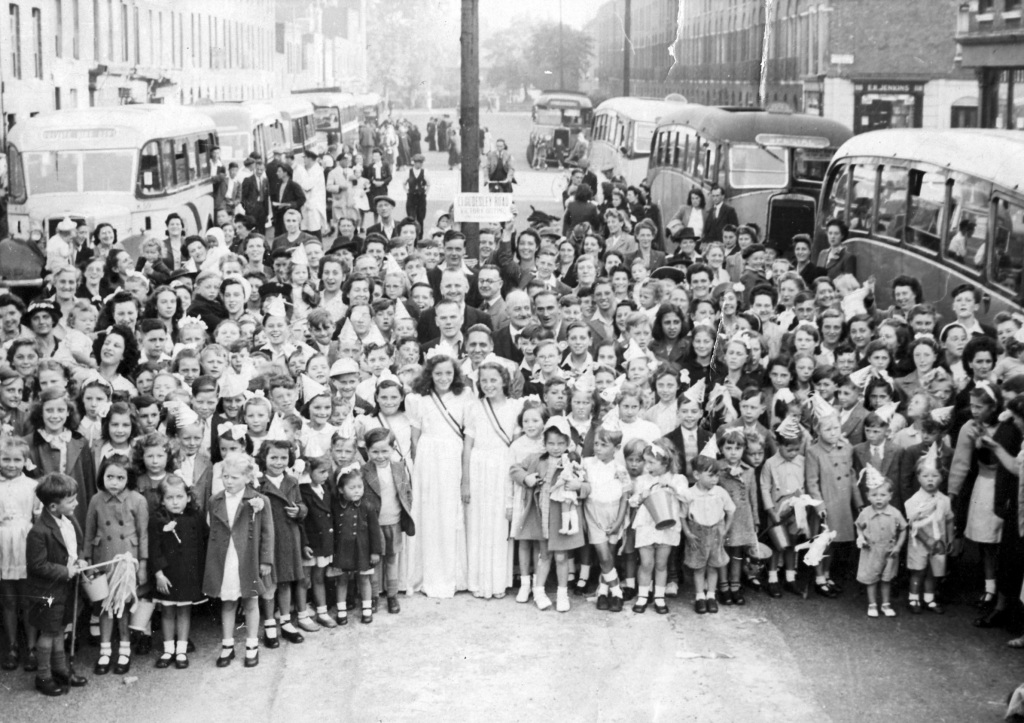
Cloudesley Road, Islington, May 1945
VE-Day celebrations in the Caledonian Road and Barnsbury areas were particularly lively with music and dancing into the early hours of the morning. In Frederica Street, over 130 children enjoyed a huge tea with jelly and ice cream, they danced to an accordion band and were given a 10s (50p) note each.
In Cloudesley Street and Cloudesley Place, contributions to the celebrations were so generous that there was enough extra money to fund a cinema trip for all residents. The children of Cloudesley Road also had an additional outing, as seen here in this group photograph.
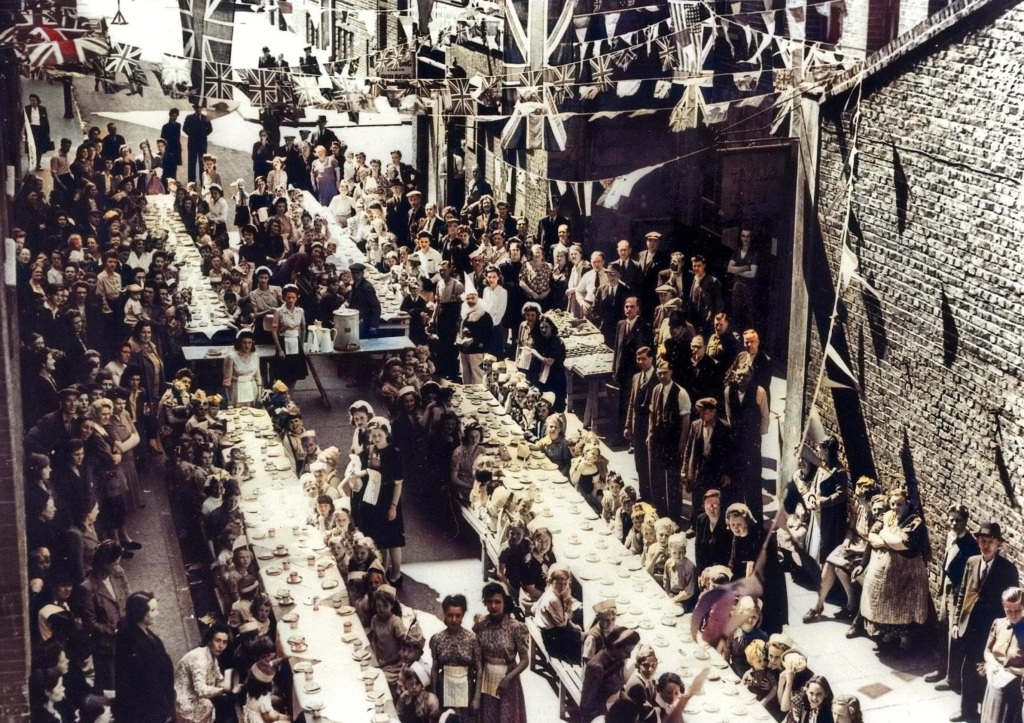
Seward Street, Finsbury, May 1945
As well as street parties, as seen here in Seward Street, VE-Day celebrations in Finsbury included a tea party and a concert for 900 senior citizens at Finsbury Town Hall. An open-air service of thanksgiving at Wilmington Square, Clerkenwell, on 13 May 1945 was attended by over 1,000 people.
The Mayor of Finsbury, Frederick Barnett, addressed the older generation, “Thanks are due to you for the way you brought up your children who, after spending their childhood days in ways of peace and happiness, proved themselves, when the testing time came, not merely equals but masters of a nation.”
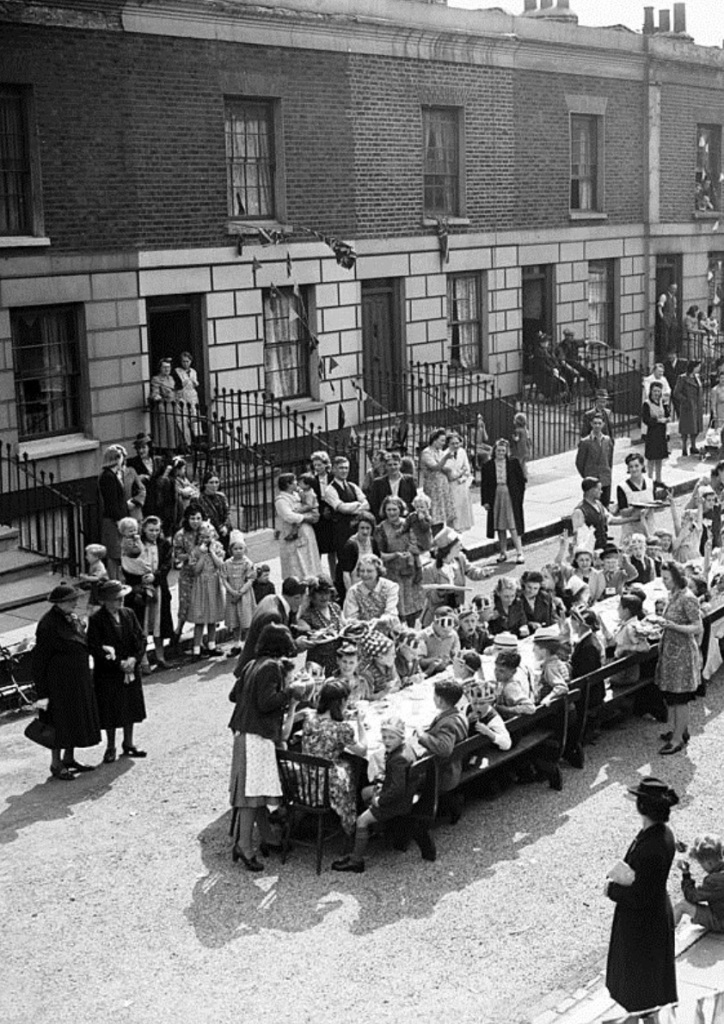
Tilloch Street, Islington, May 1945
As families were reunited and local communities came together to celebrate the end of the war in Europe, as seen here in Tilloch Street, Islington, the church and the press considered the possibility of reconciliation between Britain and Germany.
An editorial in the Islington Gazette titled ‘Pray for Germany’ commented, “We should have failed if we have merely crushed and humiliated our foes, leaving legacy of bitter hate and sullen resentment. We must pray the German nation might experience a change of heart.”
This is final edition of the exhibition We’ll Meet Again: Islington on the Home Front in Photographs 1939-45.


Leave a comment